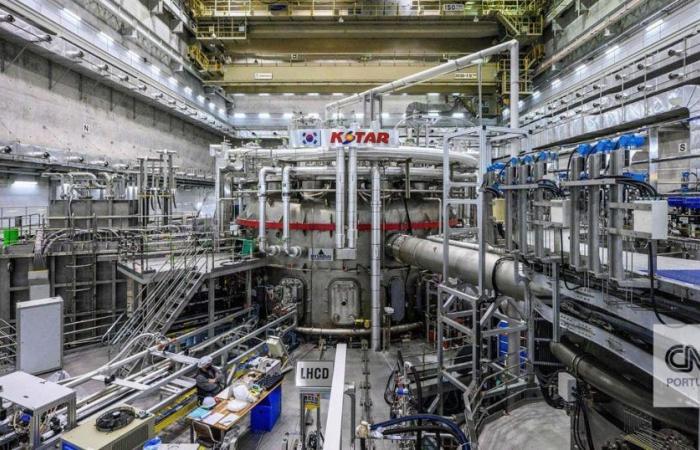
Scientists in South Korea have announced a new world record for how long they maintained temperatures of 100 million degrees Celsius – seven times hotter than the core of the sun – during a nuclear fusion experiment, in what they say is an important step towards front for this energy technology.
Nuclear fusion seeks to reproduce the reaction that makes the sun and other stars shine, fusing two atoms to release enormous amounts of energy. Often referred to as the Holy Grail of clean energy climate solutions, fusion has the potential to provide unlimited energy without planet-warming carbon pollution. But mastering the process on Earth is extremely difficult.
The most common way to obtain fusion energy involves a donut-shaped reactor, called a tokamak, in which variants of hydrogen are heated to extraordinarily high temperatures to create a plasma.
High-temperature, high-density plasmas, in which reactions can occur over long periods, are vital to the future of nuclear fusion reactors, said Si-Woo Yoon, director of the KSTAR Research Center at the Korea Fusion Energy Institute. (KFE), which reached a new record.
Maintaining these high temperatures “has not been easy to demonstrate due to the unstable nature of high-temperature plasma,” Yoon told CNN, which is why this recent record is so significant.
KSTAR, KFE’s fusion research device that it refers to as an “artificial sun”, managed to maintain plasma temperatures of 100 million degrees for 48 seconds during tests carried out between December 2023 and February 2024, beating the previous record of 30 seconds set in 2021.
KFE scientists said they were able to extend the time through adjustments to the process, including using tungsten instead of carbon in the “diverters,” which extract heat and impurities produced by the fusion reaction.
The ultimate goal is for KSTAR to be able to maintain plasma temperatures of 100 million degrees for 300 seconds by 2026, a “critical point” to be able to scale up operations, Si-Woo Yoon said.
What scientists are doing in South Korea will be used in the development of the International Thermonuclear Experimental Reactor in southern France, known as ITER, the world’s largest tokamak that aims to prove the viability of fusion.
KSTAR’s work “will be of great help in ensuring the anticipated performance of ITER’s operation on time and in advancing the commercialization of fusion energy,” said Si-Woo Yoon.
This announcement joins a series of other discoveries in the field of nuclear fusion.
In 2022, scientists at the National Ignition Institute at Lawrence Livermore National Laboratory in the United States made history by successfully completing a nuclear fusion reaction that produced more energy than was used to power the experiment.
In February this year, scientists near the English city of Oxford announced that they had set a record for producing more energy than ever before in a fusion reaction. They produced 69 megajoules of fusion energy during five seconds, which is enough to power 12,000 homes during the same period of time.
However, the commercialization of nuclear fusion is still far from a reality, as scientists are working to resolve scientific and engineering difficulties.
Nuclear fusion “is not yet ready and therefore cannot help us solve the climate crisis”, said Aneeqa Khan, a nuclear fusion researcher at the University of Manchester, in the United Kingdom.
However, he added, if progress continues, fusion “has the potential to be part of a green energy basket in the second half of the century.”
CNN’s Angela Dewan contributed to this report
Tags: seconds million degrees artificial sun breaks record latest advance nuclear fusion
--




